Welcome to a new issue of the Journal of Runic Studies, the premier Malkioni publication for studies into the nature of Glorantha. If you haven’t subscribed yet, please consult with the spirit bound to the appropriate electronic page.
God Learner Sorcery
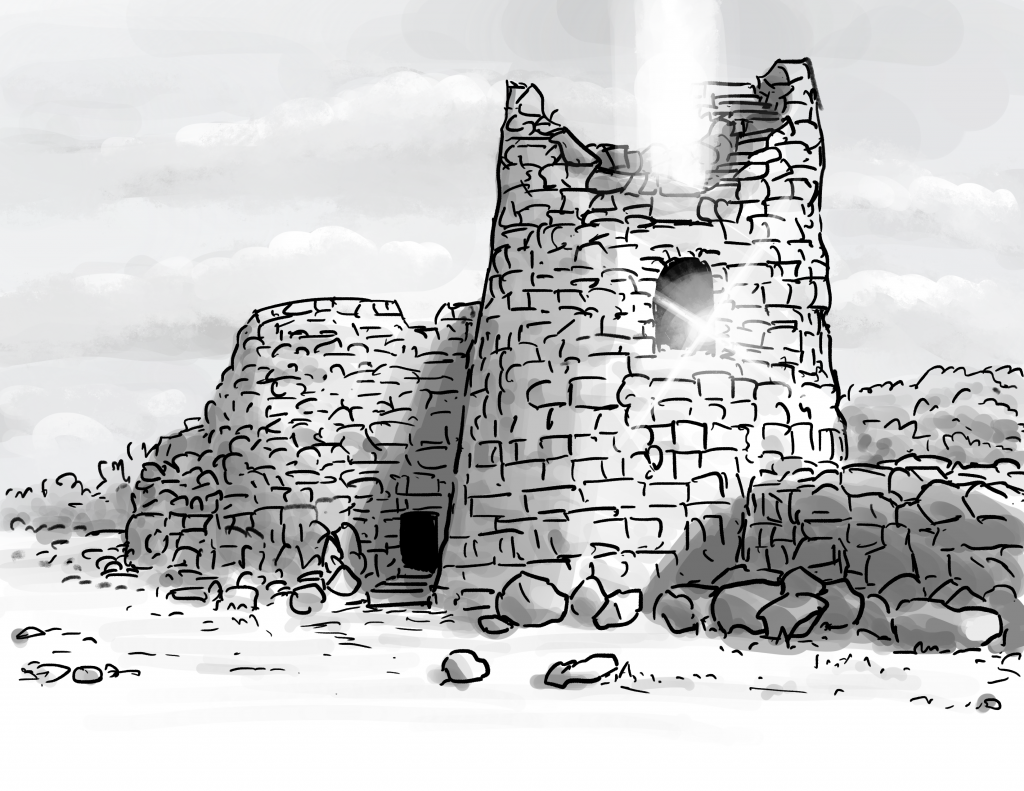
We are now occupying a nice little tower with a long history of previous occupants who have left behind documents, tablets, artifacts, and other kinds of junk. As we clean up and archive these things, we share the most interesting ones with you.
Scaldic Staves from the Stacks
Joerg recently saved these bits of poetry from mould and decomposition. We are not sure if they were supposed to be yelled at from the town’s speaker’s corner, or sung along with music or fellow drinking mates, or whatrever… so, I guess, you should do whatever feel right, record yourself, and post it online?
Umath ascending – Aether’s abode,
proud planets plunging – panicked and old.
Jagrekriand standing – steadfast alone
cruelly crashing – Storm King to a hold.
Chaosium News

Here are this week’s Chaosium news!
Many More Eulogies Surface after Steve Perrin’s Passing
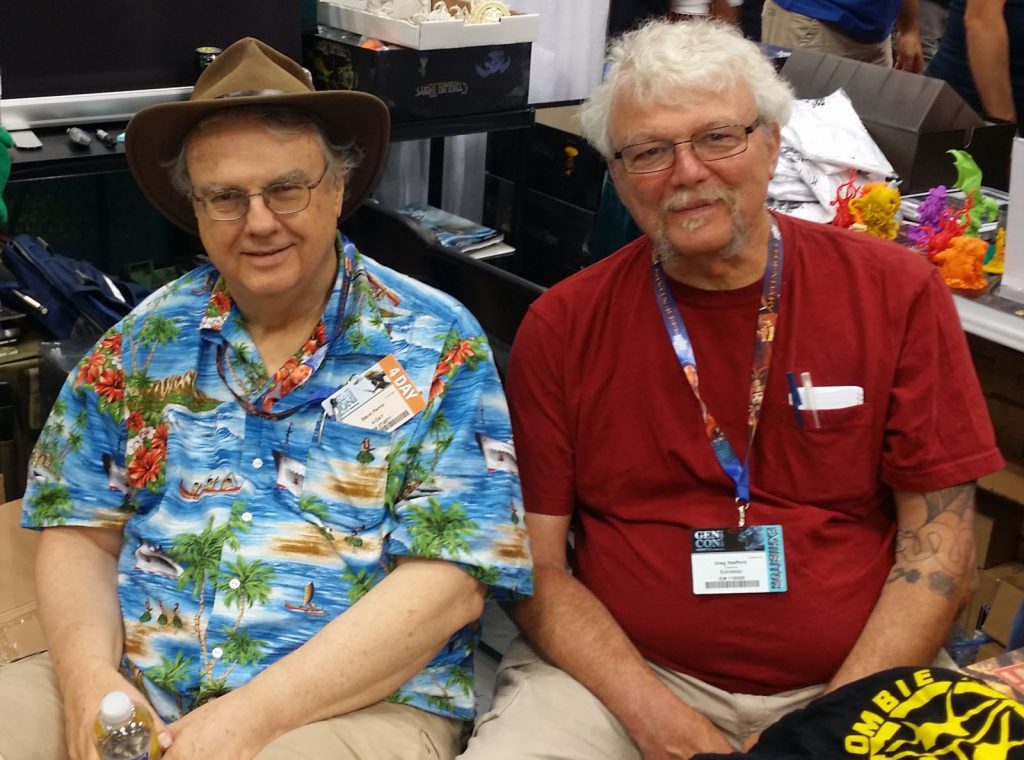
After last week’s news that Steve Perrin had died, many people started posting on his Facebook page condolences and testimonies of what his work meant to them. There are also more stories and personal comments on the BRP Central thread. Given Steve’s long bibliography and tremendous influence on the early days of the hobby, it’s not surprising (but always heartening) to see so many people taking the time to write a little something in his honour.
I haven’t been able to double-check this information yet, but I’ve seen two separate claims that Luise Perrenne, Steve’s widow and artist behind the iconic RuneQuest original covers, has gained access to the crowdfunding campaign Steve had started to support her failing health. It therefore seems that any donations going to that campaign will correctly benefit her in these difficult times.
For a complete overview over Steve Perrin’s career as a RPG designer, read Shannon Appelcline’s Advanced Designers & Dragons entry on RPG.net.
George R.R. Martin on Steve Perrin
Last week Steve Perrin, one of the foundational contributors to RuneQuest, Basic Roleplaying, and Chaosium in general, passed away (see issue 9 of the Journal). This week, Chaosium points us to George R. R. Martin’s eulogy for Steve. Of course you probably know GRRM as the author of the series of books “A Song of Ice and Fire” (which was adapted on TV as “Game of Thrones”), but he’s also the editor behind the collaborative series “Wild Cards“. This long-running sci-fi superhero universe originated from a Superworld campaign on which GRRM was the gamemaster. And of course, Superworld is another Steve Perrin game.
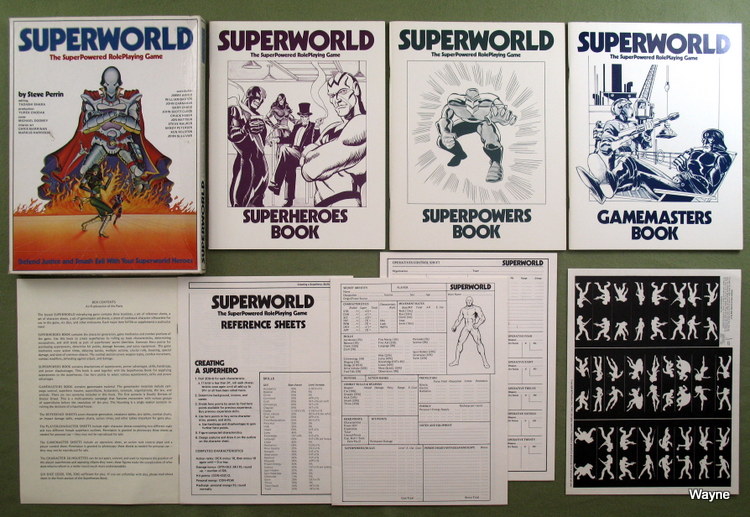
Steve had been part of Wild Cards since the beginning… BEFORE the beginning, actually… though he never actually wrote a story for us until the triptych in our latest volume, JOKER MOON, which just came out. I am very pleased that he was at least able to see his story in print and hold the book in his hand before he passed away. But his contributions to the series went way, way beyond that one tale. Steve was a game designer, a mainstay at Chaosium and other game companies, and was one of the creators responsible for such landmark RPGs as RUNEQUEST and CALL OF CTHULHU. He was also the writer and designer for SUPERWORLD, the role-playing game that inspired Wild Cards. Without his game, there would never have been a Wild Cards series.
You can read the rest of GRRM’s Steve Perrin stories in the original post, and you can get Superworld in PDF from Chaosium.
James Davis Nicoll on Steve Perrin
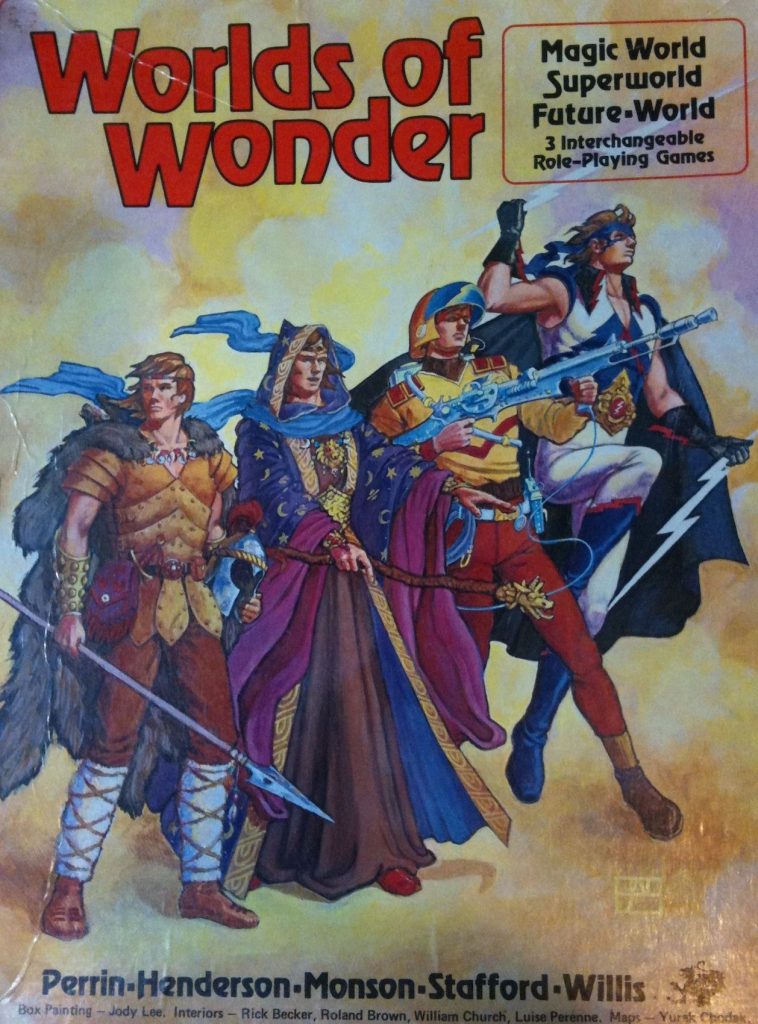
James Davis Nicoll posts on TOR his take on Steve Perrin’s career, focusing on Worlds of Wonder and BRP as a generic system:
Worlds of Wonder is the first time I encountered an attempt at setting forth that grail of roleplaying games, the universal roleplaying system. Given a robust core rule system, one need only provide setting-specific expansions, expansions that would let RPGers play in any genre they liked. They could even cobble together campaigns spanning several genres.
Rick Meints discovered the cover illustration of the unpublished fourth volume of the Sartar Rising series, the Dragonrise, repurposed.
The White Bull Campaign
Jeff’s players go through the conclusion of the Dragon of Thunder Hill, call Kallyr Starbrow some funny names, and tease “Darkness at Runegate” as a scenario for an upcoming Chaosium adventure book. We are also warned that the next session will probably feature a preview of the battle rules for RuneQuest, which I believe are scheduled to show up either in the Argrath Campaign or the Gamemaster Guide.
Vote for Chaosium and their Community Members at the ENNIES
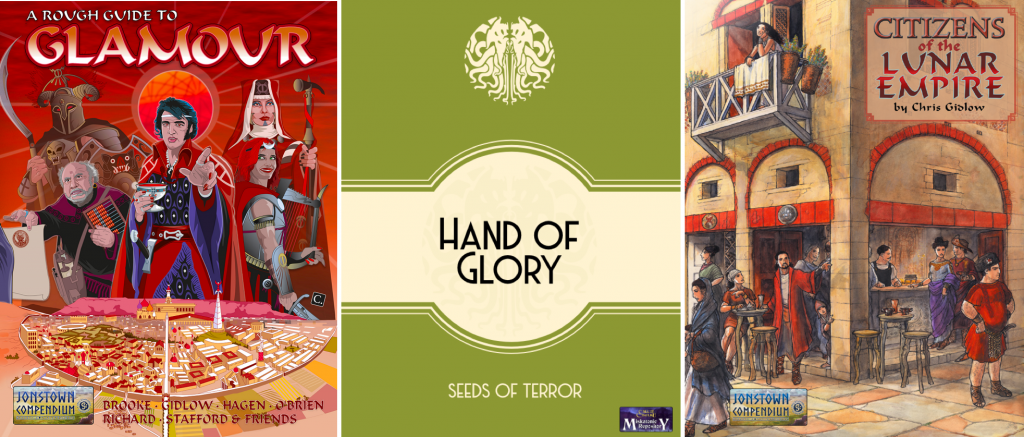
As we mentioned last week, some Jonstown Compendium and Miskatonic Repository books are up for an ENNIE award in the strangely named “Best Organized Play” category, and Chaosium is of course up for grabs in the “Best Publisher” fan award. Voting is now open, with all categories viewable here.
The Unpublished Forth Volume of the Sartar Rising Campaign
Over on the Chaosium blog, Rick Meints pulls once again some ultra-obscure item from his seemingly infinite personal collection: the cover and cover reference for the unpublished fourth volume of the Sartar Rising campaign.
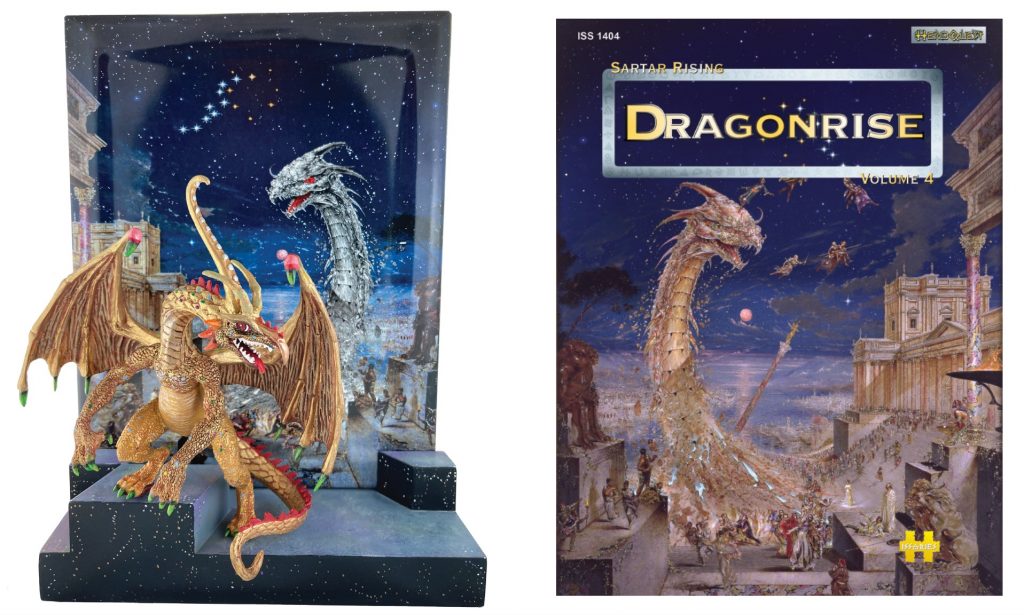
The Sartar Rising campaign was a collection of three books for the HeroWars game (Barbarian Adventures, Orlanth is Dead!, and Gathering Thunder), which later became HeroQuest and is now being rebranded as QuestWorld. These titles were available in PDF until very recently, and we’re hoping that they will come back once the rebranding is complete.
Jonstown Compendium

The Jonstown Compendium is Chaosium’s community content program for all Gloranthan games, hosted on DriveThruRPG. Disclaimer: all the relevant links are affiliate links that hopefully will let us cover some of the hosting and maintenance costs for the website and podcast! Thanks for using them!
South Pelorian Highlands
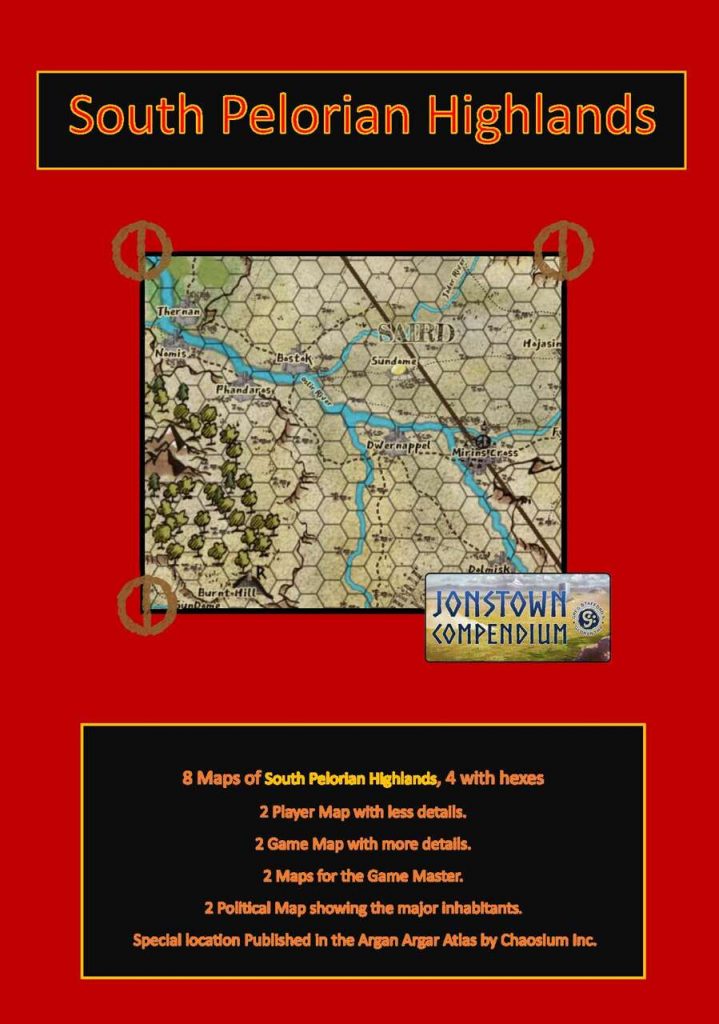
Anders Tonnberg, already responsible for some Balazar and Elder Wilds maps, is now offering some cartography for South Peloria:
There are four base maps (Players’, Game Master’s, Detailed and Political), each presented in hex-free and 5 mile hex formats. The Players’ map is in a different style to the GM and Detailed maps; the detailed map names every City as well as the major regions, roads and rivers.
Just like Anders’ previous work, the maps are done in Wondercraft, a popular software for making RPG maps.
The Company of the Dragon is Out in Print!

Andrew Logan Montgomery’s follow-up to Six Seasons in Sartar (although the two are loosely tied enough that you can play one without the other) is finally out in print-on-demand! Grab it while it’s hot.
LEGION in Print is on Sale!

If you were considering getting LEGION in print, now is the time! Neil Gibson (our guest back in Episode 1) is running a sale on it right now, in honour of Company of the Dragon being released in print.
Armies and Enemies of Dragon Pass in Print?

Martin Helsdon, author of the gigantic military reference “Armies and Enemies of Dragon Pass“, has some information on the possible arrival of a Print-on-Demand version:
The second brave soul to attempt this quest, is now fifty pages from completion. After that is done, I will have to check it, add text to fill any gaps (the translation from Word causes issues with formatting) and it will then have to be put forward for approval.
I don’t intend any other modifications to the text. The Index may be an issue, as existing text is inevitably slipping.
We wish him good luck! This kind of reference material is always easier to peruse in physical format.
Jeff’s Notes

Jeff Richard, the current mastermind on everything Gloranthan at Chaosium, is often posting notes and thoughts on the RuneQuest Facebook group. Here’s our curated list from the past week. A partial archive of these sources is compiled on the Well of Daliath.
How many arms?
Have you ever wondered why Orlanth is often depicted with four arms? Jeff tells us that this is typically to display all his powers:

Orlanth is armed with a sword, the thunderbolt, a shield, and a dragon head or axe, or even sometimes the lightning spear. He is even sometimes depicted as having three or four heads – each depicting an aspect of him (Adventurous, Thunderous, Rex, and Lightbringer).
This is a visual way of showing Orlanth’s remarkable breadth of abilities and aspects – greater than other gods, and clearly greater than any mortal, limited by a mere two hards.
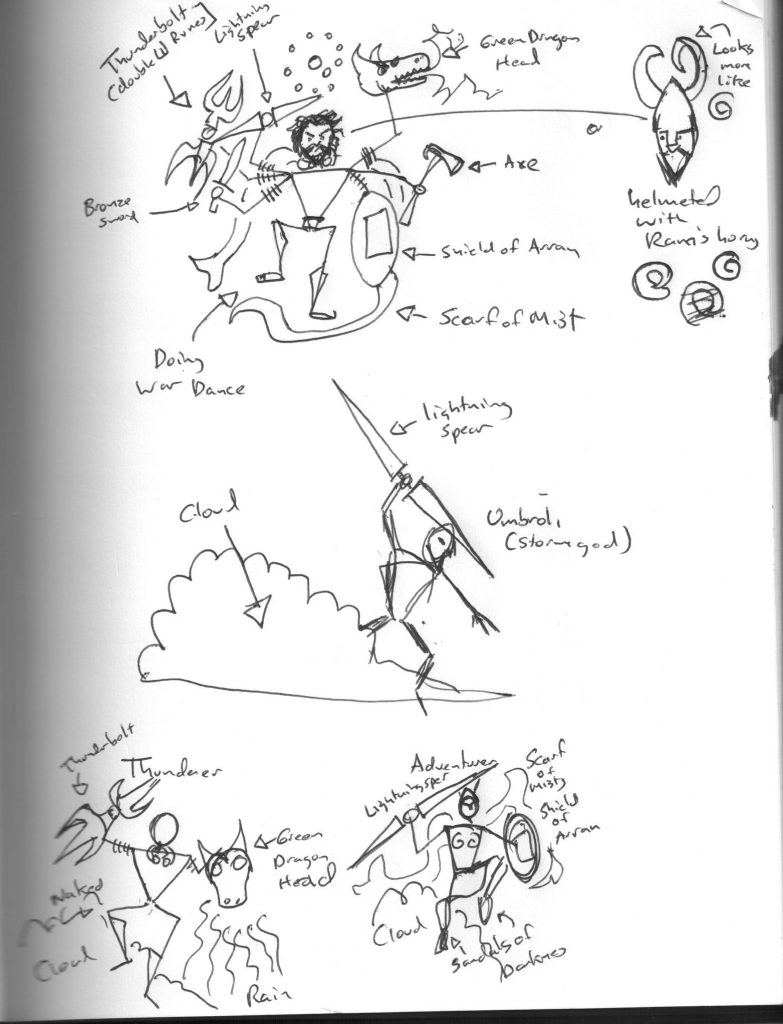
Another notable artistic choice is to always depict Orlanth in movement! That’s one of his Runes after all.
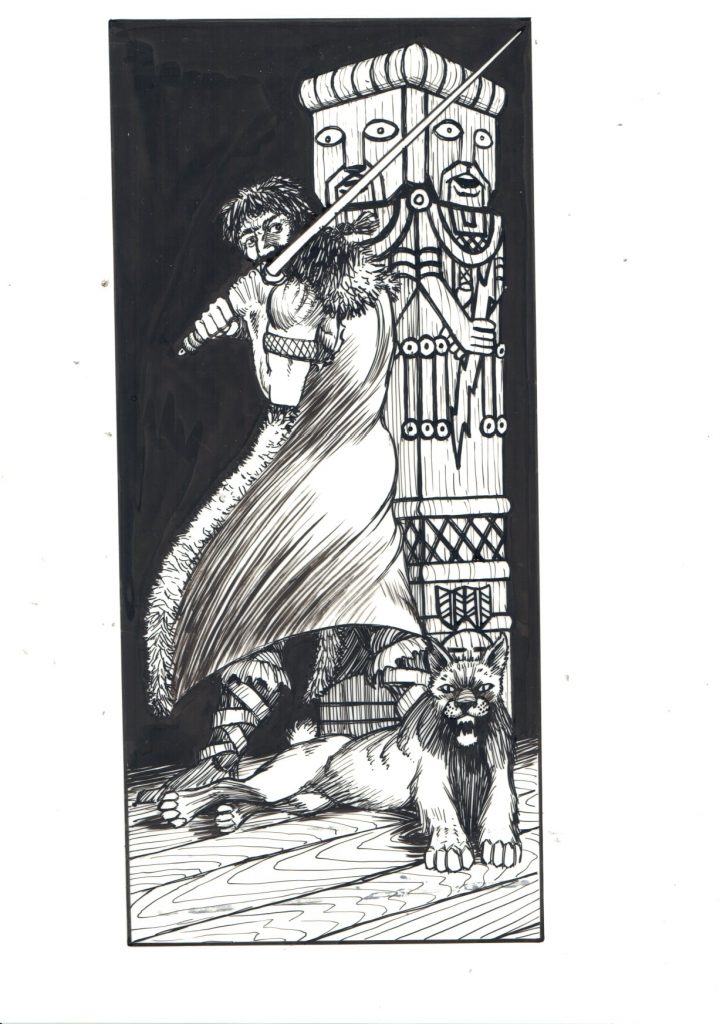
This motif of four “aspects” of Orlanth is also present in this illustration originally published in the RuneQuest 3rd edition Gods of Glorantha boxed set by Lisa Free:
[it] is based on the four-headed Svantovit pillars of Slavic mythology. I still imagine these being common in Orlanthi lands, with likely one face being female.
I imagine that the “Adventurous” aspect of Orlanth would typically be described with the female face to honour the Vinga sub-cult, but maybe in other places Vinga would instead take the place of the “Lightbringer” face.
Clans of Sartar
I love maps, so of course I love it when Jeff shares more previews of that Dragon Pass map being worked on for the Starter Set and Sartar Homeland boxed set! Check this out:
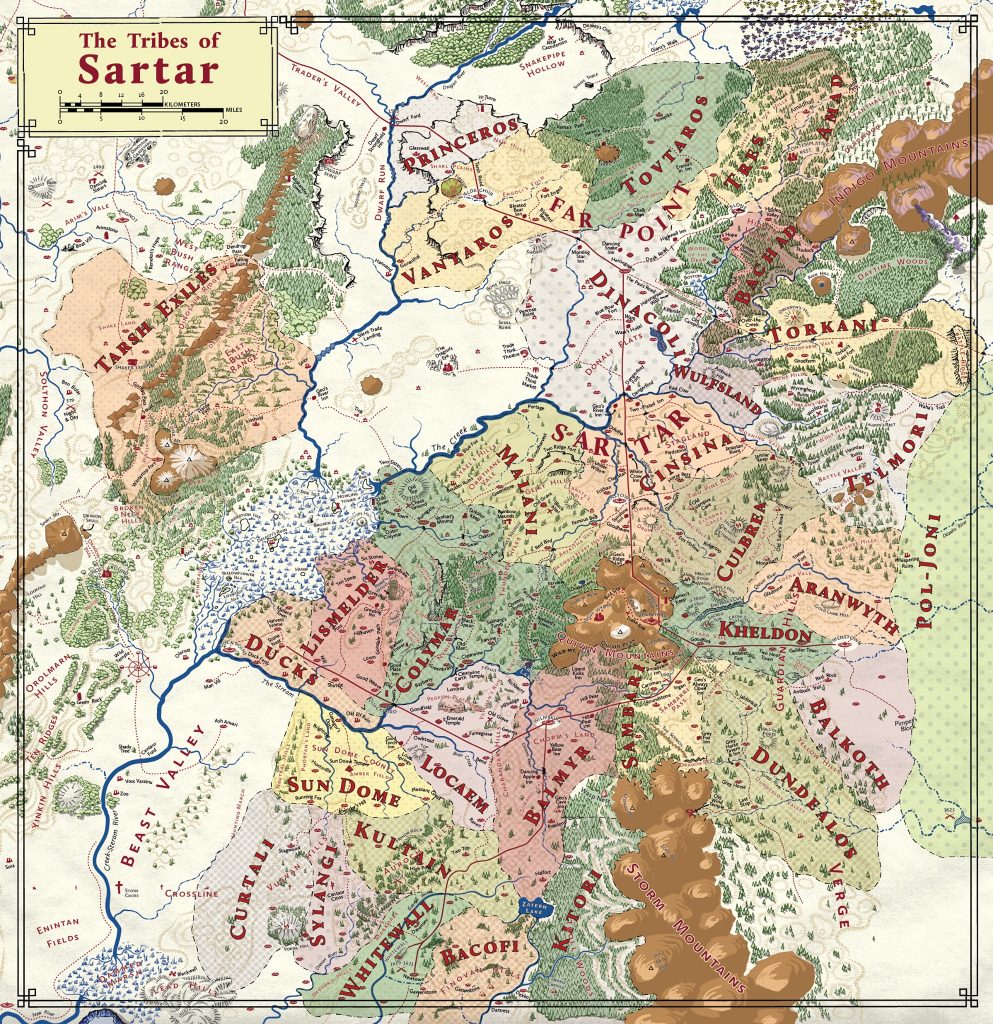
So there are 157 clans in Sartar (not including the Telmori and the Pol-Joni of course), with an average population of about 900 members. 600 are adults. The average tribe in Sartar has 6100 members, divided into about 7 clans.
We then get some average numbers, which is awesome for your world-building needs:
Of [the average 600 adults in the clan] 180 serve in the militia. About 40 adults belong to the clan aristocracy of priests and thanes (and their immediate family), about 400 are full free members, about 100 are semi-free tenants and dependents, and about 60 are unfree.
Of those 600 adults, about 200 are initiates of Orlanth, another 200 are initiates of Ernalda. 30 are initiates of Yelmalio, and 30 are initiates of the Seven Mothers. 18 are initiates of Issaries and 18 are initiates of Humakt. 12 each are initiates of Chalana Arroy, Lhankor Mhy, Daka Fal, and Storm Bull. There are 6 initiates each of Maran Gor, Babeester Gor, and Eurmal. There are another 30 initiates who fall into the none of the above category.
A few remarks:
- I’ve made a note of it in a previous Journal issue, but the most important world-building change is that now about two-thirds of a clan population are considered “adults”. Previous publications (from HeroQuest to the RuneQuest Gamemaster Adventures booklet) were hovering around half of the population being composed of adults, most often a bit less than half. I assume that these changes are two-fold, based on previews of the upcoming Sartar Homeland boxed set: the average age of adulthood has been lowered to around 13 years old, but these new adults are stuck in apprenticeships for a couple years. So let’s say that previous material was categorizing these young people as “children”, and that this is where the discrepancy comes from…
- Based on these figures and previously shared figures about some specific clans of the Colymar tribe, I think that this average clan of 600 adults would have around 400 free adults and 200 semi-free or non-free adults. A general rule of thumb is that roughly a third of these adults are part of the militia.
- The “Orlanthi All” seems to be at around two-thirds, with 200 initiates of Orlanth and Ernalda respectively, out of 300 male and female gendered clan members. I’m surprised to not see more Babeester Gor initiates to defend the interests of the Ernalda cult, and I’m equally surprised to see so many Yelmalions. Maybe the average is being skewed by sun-worshipping clans here.
Sailing around the Mirrorsea Bay
Glorantha is generally not famous for sailing adventures (its two main gaming sandboxes being completely land-locked), but with Chaosium looking closely at the Holy Country and its Mediterranean-like geographical situation, we are getting a bit of a sea breeze… (and, I hope, some good pirate shanties!)
If you don’t have the Holy Country memorized (I don’t), here’s the relevant bit from the Argan Argar Atlas (remember: it’s free!).

All distances are from Seapolis, which you can spot on the Rightarm Islands, just south of the City of Wonders’ island.
- City of Wonders: 56km (“So basically, you could go between City of Wonders and Seapolis in a morning“)
- Leskos: 120km (“A full day away“)
- Nochet: 160km (“About a day and a half away“)
- Casino Town: 224km (“Two full days away“)
- Corflu, to the east in southern Prax: 600km (“Five full days away, unless you get good winds“)
- Handra, to the west in Maniria: 1040km (“Eight or nine full days away, unless you get good winds“). This was one of Dormal’s stops when he (re)Opened the Seas in 1580.
To complement the short but evocative write-up of Seapolis from the Guide, Jeff adds:
Although Seapolis itself was built by masons out of stone or fired brick (probably brought from Esrolia), the fishing villages are probably made out of reeds and wood. Many village houses are built on posts to deal with the tides.
Now, the Guide also has some information about ships, but Jeff gives us Holy Country notes on that too:
There are three common types of ships in the Choralinthor (n.b.: another name for the Mirrorsea Bay, as far as I know): tubs, nets, and triremes.
[…]
Eyes are painted on boats to allow them to see through mist and rain (and to evade the Closing).
“Tubs” are sadly not jacuzzis equipped with oars, although that would we pretty nice:
Tubs are tub-shaped deep-hulled ships about 10 to 20 meters long, with a single, squarish sail. They are used as merchant ships, carrying goods and people, and make blue-water trips (assuming they have a Dormal shrine).
I think maybe they would look like these kind of ancient Egyptian boats (pictured as a model here):
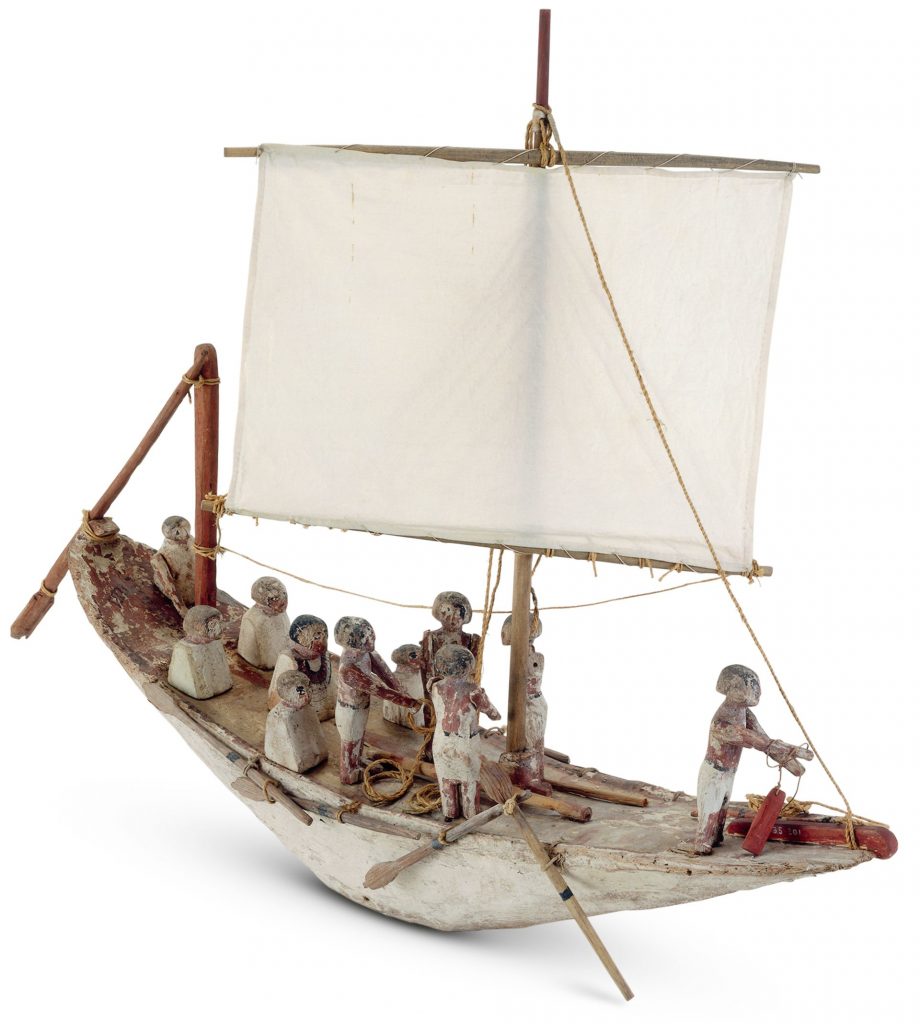
Nets are sturdy shallow-drafted boats about 5 to 10 meters long, with oars and a detachable squarish sail. They are used as fishing boats (like a pirogue, luzzu, jangada, dhoni, baddan, or bokkura).
Let’s go with another model picture, because they’re cute. That’s a dhoni:
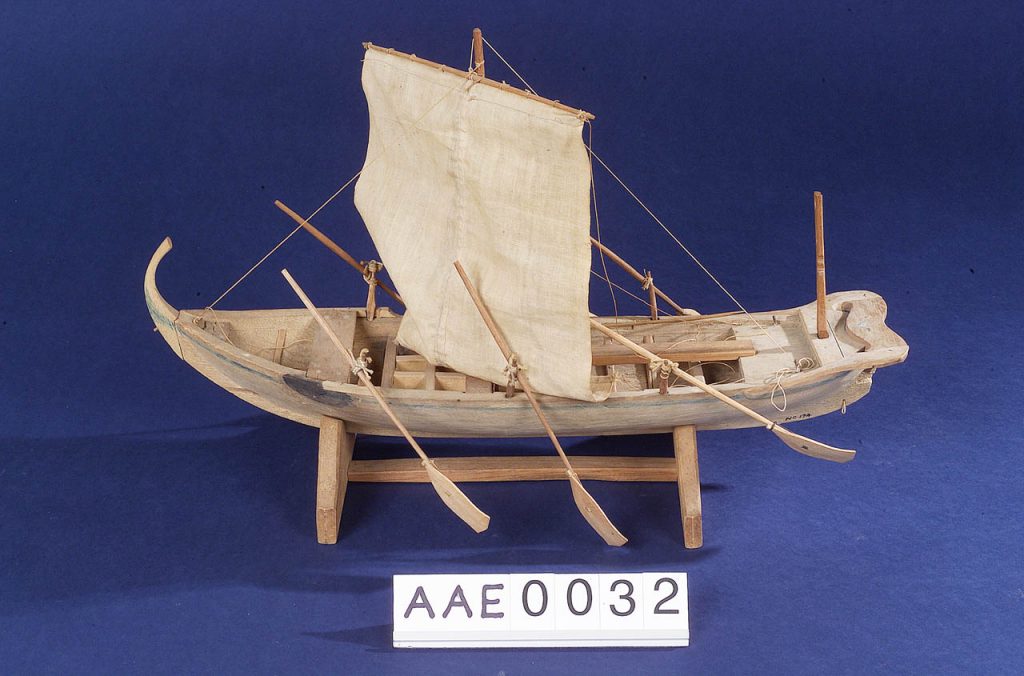
Triremes are expensive warships with oars and sails. They are 30 to 40 meters long and about 5 meters wide. Most are in the service of Nochet or Rhinos, although Seapolis maintains a handful (paid for I suspect by Esrolian merchant princes).
Probably the most well-known of the three types of ships, the trireme features prominently into any good epic story set around the Ancient Mediterranean. These are common enough that it’s super easy to find a reference picture online, but because I used models for the first two, now I need to find a trireme model for this last one:
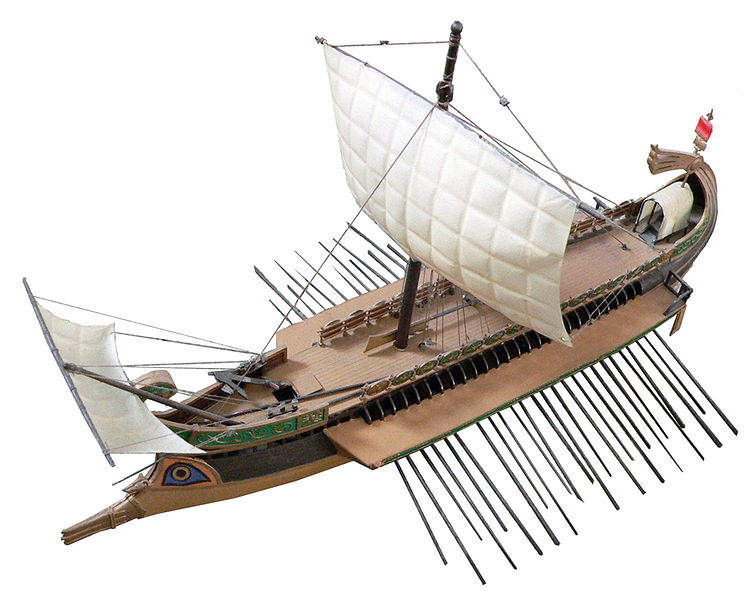
More on Boldhome Pockets
More maps! Yes! Thank you Jeff! The Boldhome map seems almost complete at this point, except for the metric scale error (the imperial one is correct):
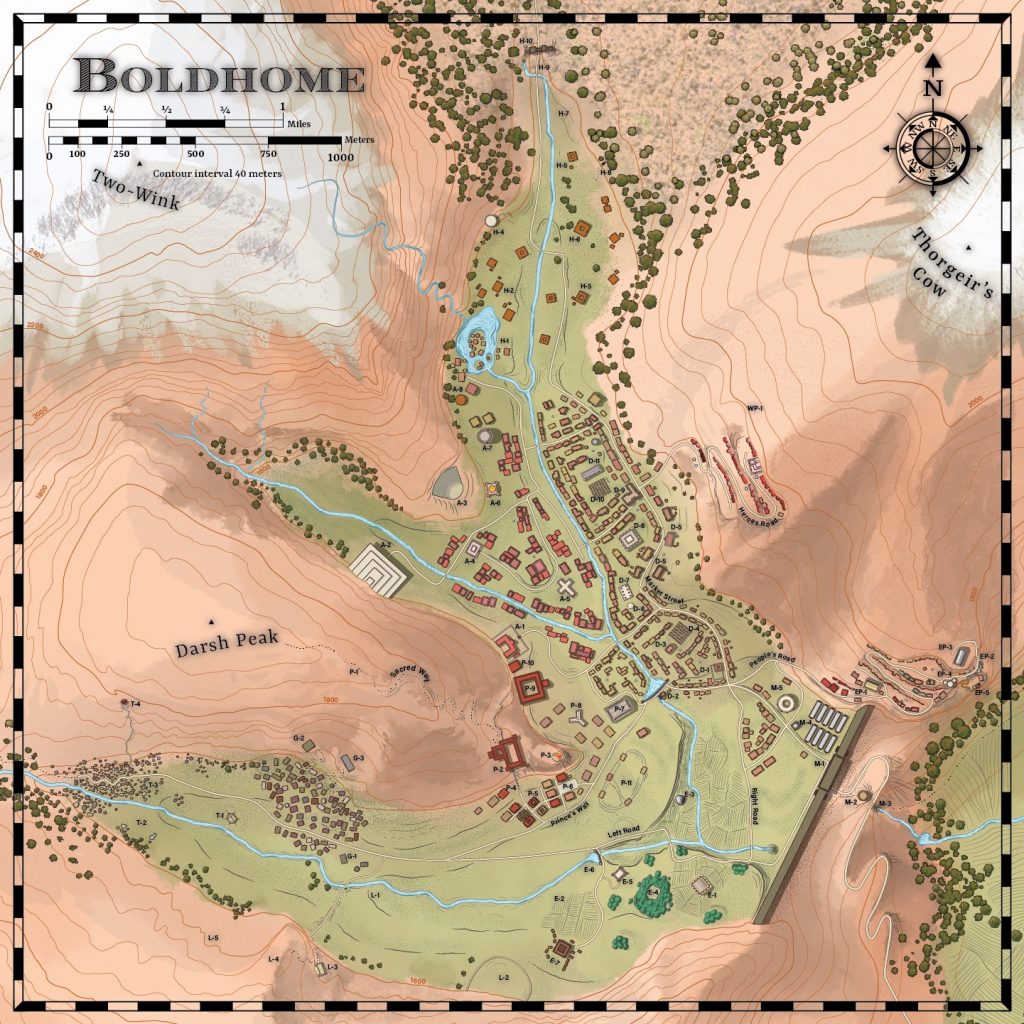
We already know from previous notes that the “Boldhome pockets” are neighbourhoods built by the dwarves in the cliffs of the Quivin mountains, complete with sewer and climate control systems.
Almost a third of the population of Boldhome lives in the East and West Pockets of the city. […] Most buildings are approximately 15-20 meters square, with each floor divided into series of rooms intended for a family unit that include a sleeping area, a shrine, a central room with a cooking fire (ventilated by a chimney), and a water room. Multiple passages exist between these “family units”, and many buildings extend deep into the cliff. The result is a honeycomb-like maze of rooms. On the map, the East and West Pockets don’t look so big, but once you see the isometric maps we have done, you will see how big they really are!
Well, I can’t wait to see more maps!
Sartarite Military
Jeff’s latest notes focus on the armies of Sartar, which are usually composed of “foot militia led by mounted noblemen called thanes“, complemented by mercenaries, warrior societies, and allies (Sun Dome templars, Humakti swords, Pol-Joni, Praxian tribes, Grazelander tribes, etc). When the Lunar Occupation ended, Kallyr was at the head of “a motley conglomeration of causes, defying neat and easy categorization and organization“. Things went downhill after her demise at the Battle of Queens, until Argrath took control of the Kingdom:
Building on his own personal cavalry forces he raised in Prax, he made his army the greatest source of wealth, honor, and power in the principality, and quickly transformed the Sartarite army to become a uniquely flexible and effective force.
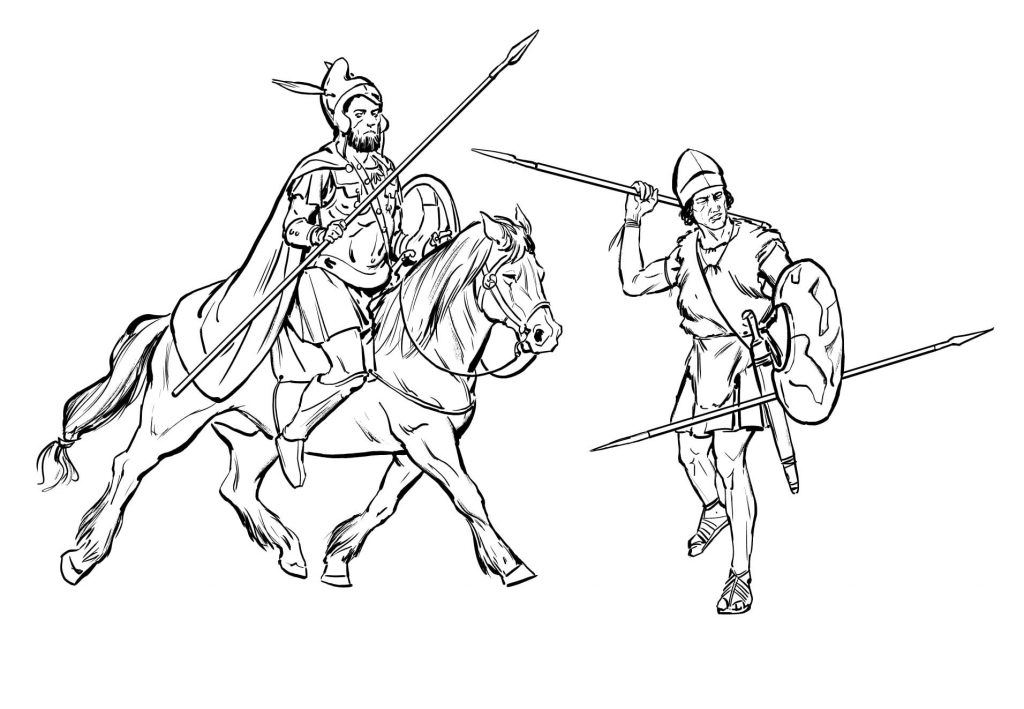
Each clan and tribe militia is composed of farmers and herders who are expected to follow their leaders in battle when called upon. The chieftain, thanes, and bodyguards are the only professional warriors, but the militia trains at least yearly, possibly during the occasion of the Orlanth Rex festivities of Movement Week:
Each Fire Season, the local militias muster at a tribal or even city level. Members participate in athletic competitions and mock sparring contests to learn how to fight, and to strengthen them.
This should be an important gathering for your Adventurers! Even though they are almost always part of this noble class, it might be fun to have them train their tribe’s farmers and herders, who turn out to be undisciplined because of some stupid feud between bloodlines!
In terms of equipment, “the Sartarite militia were primarily light infantry skirmishers“:
They are lightly armored, typically with a composite or open helm and a quilted linen hauberk, and fight with sword and javelins. They are led by their clan chiefs and thanes but follow their tribal kings into war.
About cavalries:
The Sartarite cavalry was formed in imitation of the sun-worshipping horsemen the Orlanthi encountered. These mounted and more heavily armored warriors are members of the noble castes, the only classes that could afford such things. This later led to the rise of the Orlanth Rex cult and its own mounted warrior, the “thane.” […] The thane was supported by the clan or tribe itself. They became an elite class freed from the duties of other men and sworn to the fight.
At the time of Prince Kallyr, thanes lead the militia or form the mounted bodyguard of the tribal kings. When Argrath becomes Prince, he gathers many thanes together to form elite cavalry regiments like the Twin Spears.
About warrior societies:
Warrior societies are maintained by War Clans and tribal War Gods, such as Orlanth Adventurous, Babeester Gor, Humakt, and Storm Bull. These are bands of full-time warriors who support themselves through raiding and looting (usually of livestock). They are experienced warriors who have often gone afield and acquired some wisdom and equipment, including mounts to get around. Warrior society members are built along cult lines (usually as members of Storm Bull, Orlanth Adventurous, or Humakt).
The fact that these societies are “built along cult lines” is important here: in my opinion, while a Babeester Gor Axe Sister may live in her original tribal lands, looking after the local Earth temple’s interests, some other cults like Storm Bull or Orlanth Adventurous will more often than not send their members far from home.
Finally, about mercenaries:
Individual fighters or groups of fighters are often recruited by local leaders to serve as bodyguards or professional soldiers. The guardsmen of the various Sartarite cities are mercenaries paid by the cities and mercenary companies are a common feature in Dragon Pass. Mercenary companies like the Brown Choppers and the Boldhome Axemen participated in Starbrow’s Rebellion, and the Liberation of Sartar was achieved in part with aid from numerous mercenaries like Jarandor’s Raiders, the Storm Hills Chargers, or the Hendriki Volunteers.
The Humakt and Sun Dome cultists are the best-known mercenaries in Sartar but Orlanth Adventurous mercenary companies have become quite common. Entire tribes are also known to be willing to fight for pay.
This is a great piece of world-building because it provides options for players who are more into the “murder hobo” (which should really be called “murder tourist”, really) type of adventures, rather than having to live as a part of a community, with all the ties and limitations that implies.
Vinga by Katrin Dirim
Here’s a quick one: a picture of Vinga, who is at times described as the daughter of Orlanth, or as a female aspect of Orlanth.
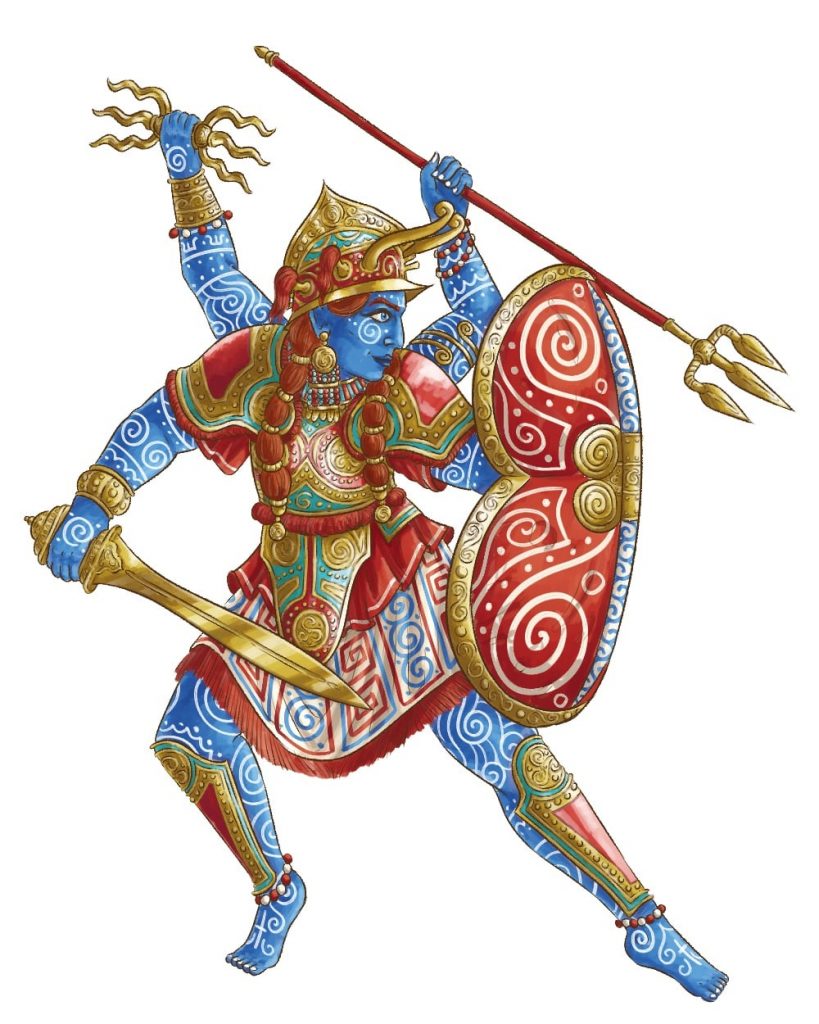
Community Roundup
The community roundup is our highlight of interesting things being mentioned in the Glorantha-related Facebook groups, sub-Reddits, and other similar online places.
Human Sacrifice
A thread on human sacrifice on BRP central received a comment by Jeff Richard confirming which Dragon Pass cults accept it:
Of the Lightbringers gods (Orlanth, Chalana Arroy, Eurmal, Issaries, Lhankor Mhy), none accept human sacrifice, unless you consider the life of being a Trickster a very slow human sacrifice. Ernalda, Yelmalio, Yelm, Polaris, Yelorna, Ourania, Dendara, Lodril, Storm Bull, Waha, Eiritha, Asrelia, Ty Kora Tek – all refuse human sacrifice.
Of the gods of Death, Maran Gor, Babeester Gor, Humakt, Gorgorma, Shargash – all accept human sacrifice. So does Hon-eel. Several other Grain Goddesses do as well. So do Valind and Ygg.
Newt Newport Starts “Arkat’s Playground”
Newt Newport is one of those names you keep running into when it comes to Glorantha and RuneQuest. He’s the man behind D101 Games, which publishes the OpenQuest RPG (often described, slightly tongue-in-cheek, as “the subset of RuneQuest rules that you actually play“), and has a history of producing several high-quality Gloranthan fanzines (Gloranthan Adventures and Hearts in Glorantha).
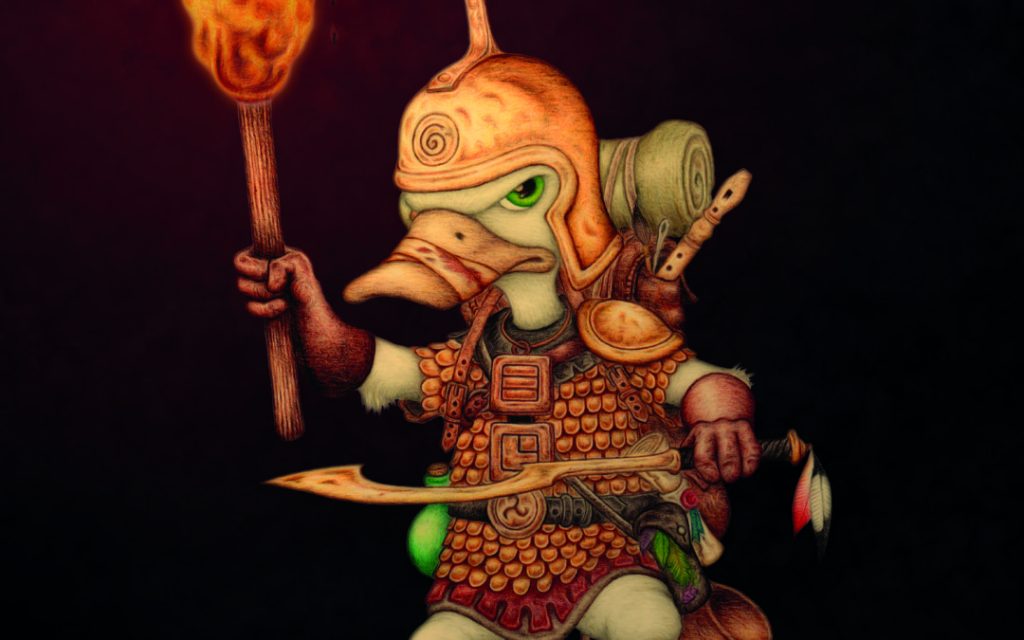
After last year’s announcement that these fanzines were ending, I thought that Newt would be focusing all his energy on D101 material, but it sounds like his heart is still, indeed, in Glorantha! A recent blog post announced the creation of the “Arkat’s Playground” imprint under which he plans to produce some Gloranthan content for the Jonstown Compendium.
I’m currently writing up a Lunar adventure set in the wastes of Prax, that I’ve been running at conventions for the last couple of years (see cover below, art by Dan Barker).
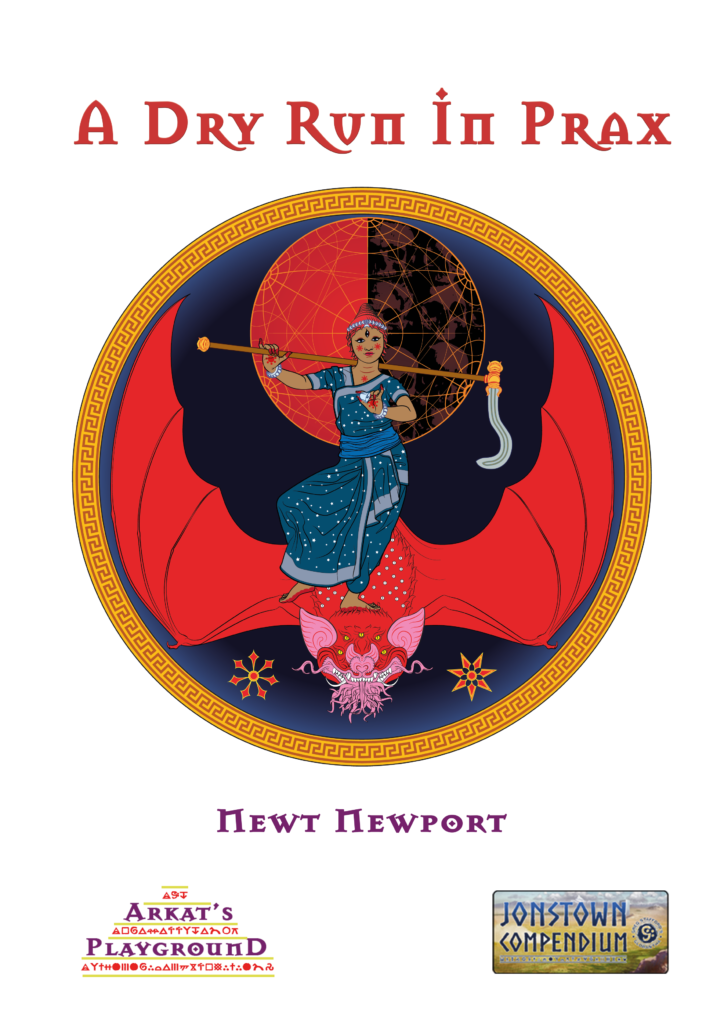
These are great news, and they arrive on the same week that I received my copy of OpenQuest 3rd edition!
RPG Imaginings on the Red Book of Magic
The YouTube channel “RPG Imaginings“, which features reviews and unboxings of RPG products, has just posted a sponsored video on the recently released Red Book of Magic. This is a great way to get a proper look at the book if you haven’t acquired it yet:
Thank you for reading
That’s it for this week! Please contact us with any feedback, question, or news item we’ve missed!


